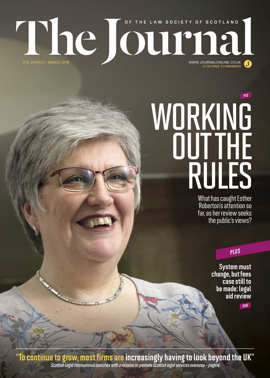HSE appeals: experts allowed in
Prohibition and improvement notices have long been a powerful tool for HSE inspectors seeking to ensure the wellbeing of workers. Until recently, they have proven hard to overturn, even where a company could show that its practices were safe and there had, in fact, been no risk to employees. However, the success of a recent appeal against a notice shutting down operations on a North Sea oil rig, in HM Inspector of Health and Safety v Chevron North Sea Ltd [2018] UKSC 7 (8 February 2018), has at least paved a way for those seeking to challenge notices imposed by an inspector.
Quite apart from the impact of an enforced shutdown of operations, prohibition and improvement notices under ss 22 and 23 of the Health and Safety at Work etc Act 1974 are recorded on the HSE’s database for a period of five years. That is eminently justifiable in the case of an organisation guilty of an infringement, but a much harder pill to swallow for a business that is doing what is expected of it to protect both its staff and the public. Until recently, though, there was no obvious way to challenge the facts, or perceptions of risk, on which such a decision was based.
The forum for resolving disputed notices is an appeal to the employment tribunal in terms of s 24 of the 1974 Act, but, lacking a substantial amount of jurisprudence, there had been some debate in relation to what the tribunal can, and cannot, take into account when determining an appeal.
Thankfully, welcome clarification has now been provided by the Supreme Court in the Chevron case. It follows a 2013 inspection of one of Chevron’s offshore installations, when the HSE inspector formed the view that the stairs and platforms leading to the installation’s helideck had corroded and weakened, and were therefore unsafe. Concerned that they could give way under a person’s weight, the inspector served a prohibition notice.
Convinced that the steelwork was in a perfectly safe condition, Chevron marked an appeal to the employment tribunal and removed the steelwork for expert analysis. The expert’s conclusion was that all the relevant steelwork met the requisite British Standard and there was no risk of a person falling through it.
On this basis, there was not, and never had been, any risk to the safety of anyone on board Chevron’s installation. Understandably, Chevron sought to rely on this expert evidence in the appeal, and this became the crux of the matter: the Supreme Court was ultimately asked to determine whether, in the context of an appeal under s 24, the tribunal could have regard to the expert evidence produced by Chevron or whether it was limited to considering only “information that was available, or ought reasonably to have been available, to an inspector at the time of service of the notice”.
In determining the appeal in favour of Chevron, the court held that “when it comes to an appeal, the focus shifts. The appeal is not against the inspector’s opinion but against the notice itself... it involves the tribunal looking at the facts on which the notice was based… The inspector’s opinion about the risk, and the reasons why he formed it and served the notice, could be relevant as part of the evidence… but [we] can see no good reason for confining the tribunal’s consideration to the material that was, or should have been, available to the inspector. It must… be entitled to have regard to other evidence which assists in ascertaining what the risk in fact was”.
In other words, the role of the tribunal is to determine, as a matter of fact, whether any risk to safety actually existed at the time the notice in question was served. That is materially, and crucially, different from the terms of s 22 of the Act, which permits an inspector to serve a prohibition notice if he or she is “of the opinion that” there is “a risk of serious personal injury”.
As a result of the decision, greater consideration should now be given to obtaining expert evidence about alleged risks that give rise to a prohibition or improvement notice, as this can form the basis of an appeal.
If that evidence ultimately “shows that there was no risk at the material time, then, notwithstanding that the inspector was fully justified in serving the notice, it will be modified or cancelled as the situation requires”.
In this issue
- Borrowings, partner capital and profitability
- GDPR and the cloud
- Employment claims: is the flood still to come?
- Contributory fault: drivers, cyclists and pedestrians
- Reading for pleasure
- Opinion: Derek McCabe
- Book reviews
- Profile: Siobhan Kahmann
- President's column
- Application changes coming
- People on the move
- Seeking a better way
- Beyond borders
- Drawings and profitability
- Enforceable rights or progressive policy goals?
- Conflict theory: it works
- What the liquidators don't tell you
- The office on the move
- Please can we have some more?
- Health check for doctors' lines
- When creditors come first
- Keeping goods exclusive
- Tenant Farming Commissioner: the story so far
- HSE appeals: experts allowed in
- Scottish Solicitors' Discipline Tribunal
- Please don't stop the music
- Broadcasting's business end
- Public policy highlights
- Scam warnings escalate
- This time it's personal
- The game's not a bogey!
- "Only amateurs attack machines; professionals target people"
- When estate agents need client ID
- Banks, client accounts and the Money Laundering Regulations
- Third party rights: what now?
- Ask Ash






